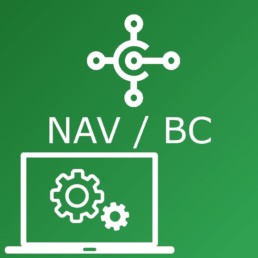Answers for the developer profile in Amazon Seller Central & Vendor Central (100 % success rate)
Would you like to apply for developer rights in Amazon Seller Central or Vendor Central? Complete your Amazon developer profile stress-free with the help of our catalog of answers. We know the right answers to Amazon’s developer profile questions. Get developer rights to Amazon’s new Selling Partner API (SP-API) now. Our experts will also be happy to help you adapt the answers to your company’s specifics and provide support in the event of queries from Amazon.
Our catalog of answers for your Amazon developer profile (SP API) in Seller Central & Vendor Central
Last update of our answers: 15th July 2024
Based on our experience with numerous SP-API projects, we, DMS-SYSTEMHAUS, have formulated exemplary answers to the Amazon Marketplace questions on the Seller/Vendor Central developer profile. By submitting our answers, Amazon grants you developer rights and thus access to the SP-API (including restricted roles). We will be happy to support you in adapting the answers to your company’s specific requirements.
We will be happy to provide you with the catalog of answers (price on request). 100% success rate with our help!
Duration until approved developer status (SP-API)
Private developers (= Amazon sellers): approx. 1 week
Public developers (= providers of an app in the Selling Partner App Store): slightly longer process
Answer Amazon SP-API developer profile (Seller Central & Vendor Central) with restricted roles
and gain access to the Selling Partner API (SP-API)
To gain access to Amazon’s new Selling Partner API (SP-API for short), the first step is to register as a developer. To do this, the developer profile must be filled out in the respective Seller Central or Vendor Cenral account and a corresponding application submitted to Amazon.
For the retrieval of personal data (e.g. address data), Amazon has massively tightened the compliance requirements for registering the developer profile in Seller Central and Vendor Central in recent months and years. With the introduction of the SP API, which replaces Amazon MWS, there is an increased focus on the protection of personal customer data. While relatively lax answers were accepted in the developer profile questionnaire a few years ago, Amazon now requires a sophisticated security concept as part of the answers if you want to request personal data. Among other things, this concept must be in line with several strict Amazon guidelines, only some of which are publicly available.
This is why we – DMS-SYSTEMHAUS GmbH – experience again and again that most companies fail to register the developer profile and also repeatedly submit new “attempts” over a period of several months. This means an immense amount of time and project delays for many companies.
With the help of our answer catalog, on the other hand, you will have unrestricted access to the Amazon SP-API in no time at all!
Activate restricted roles in the Amazon Seller Central developer profile
As described above, Amazon is particularly strict if you, as a prospective Amazon developer, wish to request personal data, which is the rule. Access to this personal data is regulated by “restricted roles”.
Restricted roles are access authorizations that make it possible to query personal data of Amazon shoppers via the SP API. In Amazon parlance, this is often referred to as PII roles (PII = personally identifiable information). Amazon requires a sophisticated security concept here, which means that you have to answer numerous security questions correctly.
There are currently three “restricted roles” in Amazon Seller Central or Vendor Central:
- Direct-to-Customer Delivery (Restricted): Generate shipping labels and send Amazon orders directly to customers.
- Tax Invoicing (Restricted): Generate tax invoices to comply with tax regulations.
- Tax Remittance (Restricted): Calculate and remit sales taxes.
Further information on the range of functions behind the individual roles can be found in the following links:
Would you like to have your own developer rights approved in Amazon Seller Central (SP-API)?
Get your developer profile approved to use Amazon's SP API with our support.
100% success rate with our support!
The technical and organizational measures described in the list of answers (e.g. security precautions regarding access protection, etc.) should actually be implemented in practice.
We have sample answers to all questions about the Seller Central developer profile:
“Private developer”: You sell products on Amazon and would like to optimize your own processes via interface access to the SP API.
Sample answers to all questions in the “Application examples” category (private developer):
-
Describe the application or feature(s) you intend to build using the functionality in the requested roles.
-
Describe why you require Personally Identifiable Information to build your application or feature.
“Public developer”: Amazon developers who want to sell their app to end customers or want to be listed in the Selling Partner App Store.
Applications from public developers are generally more complex and individual than applications from private developers. One of the reasons for this is that Amazon monitors public developers more strictly and wants more questions answered (e.g. differences to existing competitor products).
Helpful tips and exemplary answers for orientation so that you can answer these individual questions about your application/app relatively easily (public developers):
-
Describe the application or feature(s) you intend to build using the functionality in the requested roles.
-
Describe why you require Personally Identifiable Information to build your application or feature.
- Specify the marketplaces (countries)
- Describe how the app or feature(s) will benefit authorized users.
- Do you currently support online retailers?
- List the online channels you support today.
- How many employees does your company have?
- Do you intend to launch features that require personally identifiable information (PII) within 90 days?
- What differentiates your new feature/application from other applications in the category?
- Please describe any country-specific features you are providing.
- Please list the Amazon programs you plan to support with your application or functionality.
Answers to security controls are identical for “private” and “public” developers.
Sample answers to all questions in the category “Security controls” (yes/no):
- Do you use network controls to prevent unauthorized access to Amazon data?
- Do you restrict access to Amazon data based on the user’s activity or role?
- Do you encrypt Amazon data in transit?
- Do you have an incident response plan that includes monitoring, detecting and responding to potential threats and security incidents?
- Does your incident response plan include reporting security incidents involving Amazon data to 3psecurity@amazon.com?
- Are minimum password requirements established for personnel and systems?
- Are credentials (passwords, encryption keys, secret access keys) stored securely? In other words, do you avoid storing credentials in public repositories sharing general credentials or credentials for programming in applications.
- List all outside parties with whom your organisation shares Amazon Information and describe how your organisation shares this information.
-
List all non-Amazon MWS sources where you retrieve Amazon Information.
- How long do you store personal data?
- Do you have a privacy and data processing policy?
- Do you encrypt stored personal data?
- Do you use differentiated access controls to restrict access to personal data?
- Do you use audit logs to detect security incidents and take appropriate action?
Answers to security controls are identical for “private” and “public” developers.
Sample answers to all questions in the category “Security controls” (continuous text):
-
Describe the network protection controls used by your organisation to restrict public access to databases, file servers and desktop/developer endpoints.
-
Describe how your organisation individually identifies employees who have access to Amazon Information and restricts employee access to Amazon Information on a need-to-know basis.
-
Describe the mechanism your organisation has in place to monitor and prevent Amazon Information from being accessed from employee personal devices (such as USB flash drives, mobile phones) and how you are alerted in the event that such incidents occur.
-
Provide your organisation’s privacy and data-handling policies to describe how Amazon data is collected, processed, stored, used, shared and disposed. You may provide this in the form of a public website URL.
-
Describe where your organisation stores Amazon Information at rest and provide details on any encryption algorithm used.
-
Describe how your organisation backs up or archives Amazon Information and provide details on any encryption algorithm used.
-
Describe how your organisation monitors, detects and logs malicious activity in your application(s).
-
Summarise the steps taken within your organisation’s incident response plan to handle database hacks, unauthorised access, and data leaks.
-
How do you enforce password management practices throughout the organisation as it relates to required length, complexity (upper/lower case, numbers, special characters) and expiry period?
-
How is Personally Identifiable Information (PII) protected during testing?
-
What measures are taken to prevent exposure of credentials?
-
How do you track remediation progress of findings identified from vulnerability scans and penetration tests?
-
How do you address code vulnerabilities identified in the development lifecycle and during runtime?
-
Who is responsible for change management and how is their access granted? Please specify job title.
Your benefits from our catalog of answers when activating your Amazon developer profile (SP-API)
Answer catalog
We have created a sample catalog of answers to Amazon’s questions in the developer profile. Our answers will help you meet all of Amazon’s strict security requirements.
Time saving + 100 % success
With our support, you have almost no effort and, as a private developer, receive approved access to Amazon’s SP API within a few working days. 100% success rate!
Fair pricing
Fair package price with support from our experts, who submit the developer application together with you (optional) and provide support in the event of queries from Amazon.
SP-API ready - mandatory from 2024
Amazon MWS – the previous API – has been switched off. Our answers are designed to give Amazon sellers access to Amazon’s new Selling Partner API (SP-API) within a short period of time.
English support, Global customers, German expertise
We are a German company, but provide you with the answers in English so that they are globally valid. Of course, our SP-API & compliance experts provide English-language support.
Latest update: 15th July 2024
We are constantly adapting our catalog of answers to Amazon’s new requirements.
What our customers say about our Amazon answer catalog
Managing Director, main sales channel Amazon
"It worked out. 🙂 Thank you very much for your support!"
Developer status: private developer
Web developer, main sales channel Amazon
"The access was approved on Thursday. Awesome, thanks! Now the real work begins for me!"
Developer status: private developer
Head of software development, ERP system provider
"Good news: We have now been approved for public developer status. Thanks again for the catalog of answers and the valuable tips."
Developer status: public developer
FAQ: Complete developer profile in Amazon Seller Central & Vendor Central
The Selling Partner API (SP-API) offers all Selling Partners and third-party developers some improvements over Amazon Marketplace Web Service (MWS), such as modernized, JSON-based REST API design standards. In the future, new API features will only be integrated into the SP API, with no more updates to MWS. Amazon MWS will no longer be available after December 31, 2023. All MWS developers must migrate to the Selling Partner API (SP-API) to avoid service disruptions.
The Amazon Developer Profile collects your company’s contact information, information about the data you need in the Amazon Services API, and security and usage information to ensure compliance with Amazon’s user guidelines and privacy policy.
After you have submitted your answers to the developer profile, Amazon will automatically create a support ticket for you. Amazon will then check your answers and give you feedback.
1) If you have submitted the answers without the support of our answer catalog, you will probably notice that Amazon often rejects your answers and requests new information several times. Since Amazon’s terms of use for developers have become much stricter, the answers submitted in the developer profile are often rejected.
2) As long as you closely follow our catalog of responses, Amazon will typically approve your developer request within a few business days. Depending on the company-specific adjustments you have made, Amazon may ask you about 1-2 details. We will also be happy to help you answer these questions.
It is permissible for you to hire a third-party provider if you need support in answering the questions in the Amazon developer profile and in implementing the corresponding measures. Amazon explicitly authorizes this in point 8 of their developer profile FAQ. Source: https://docs.developer.amazonservices.com/en_DE/faq.html













